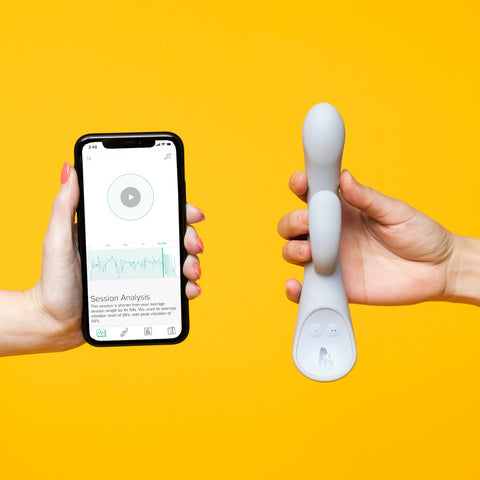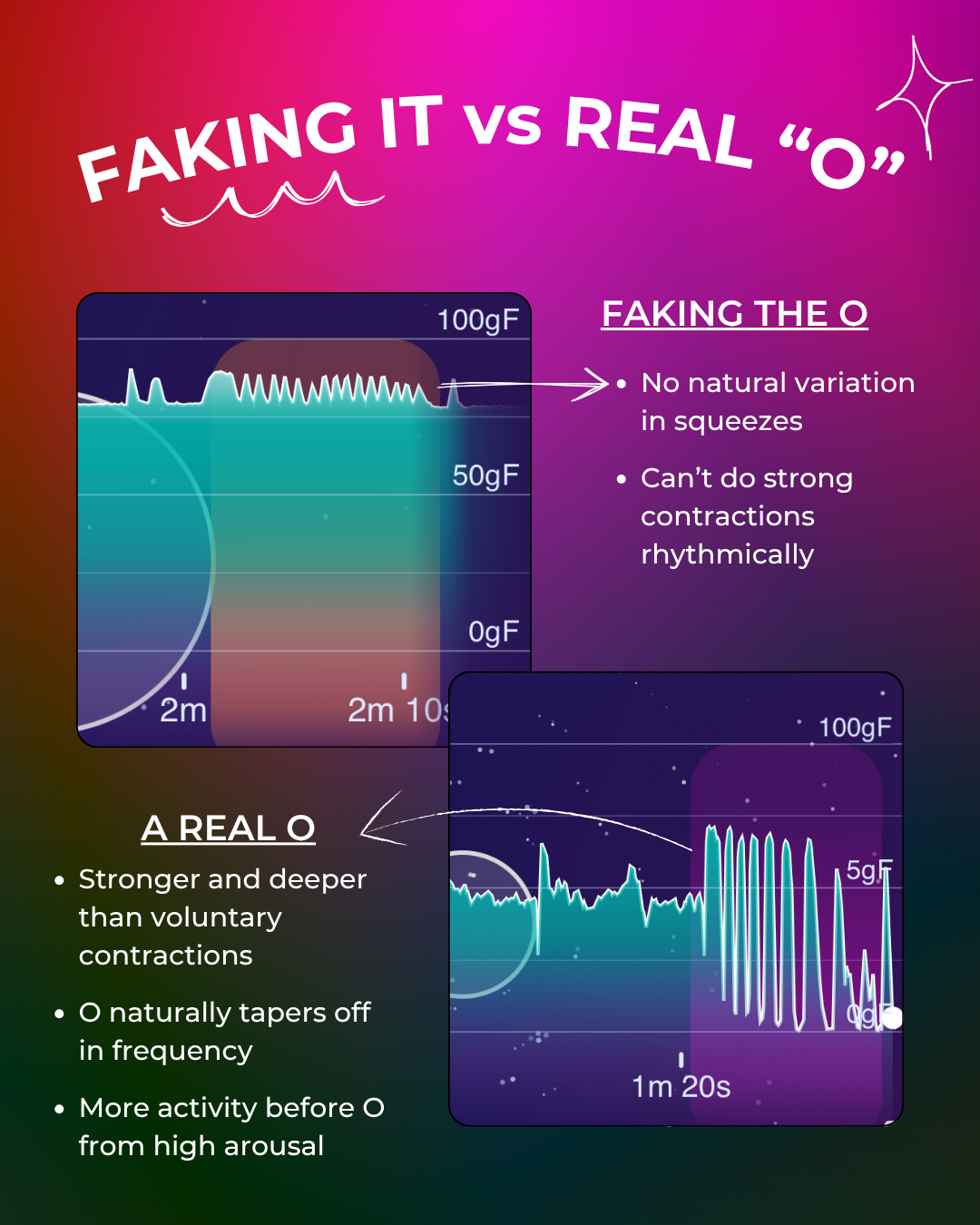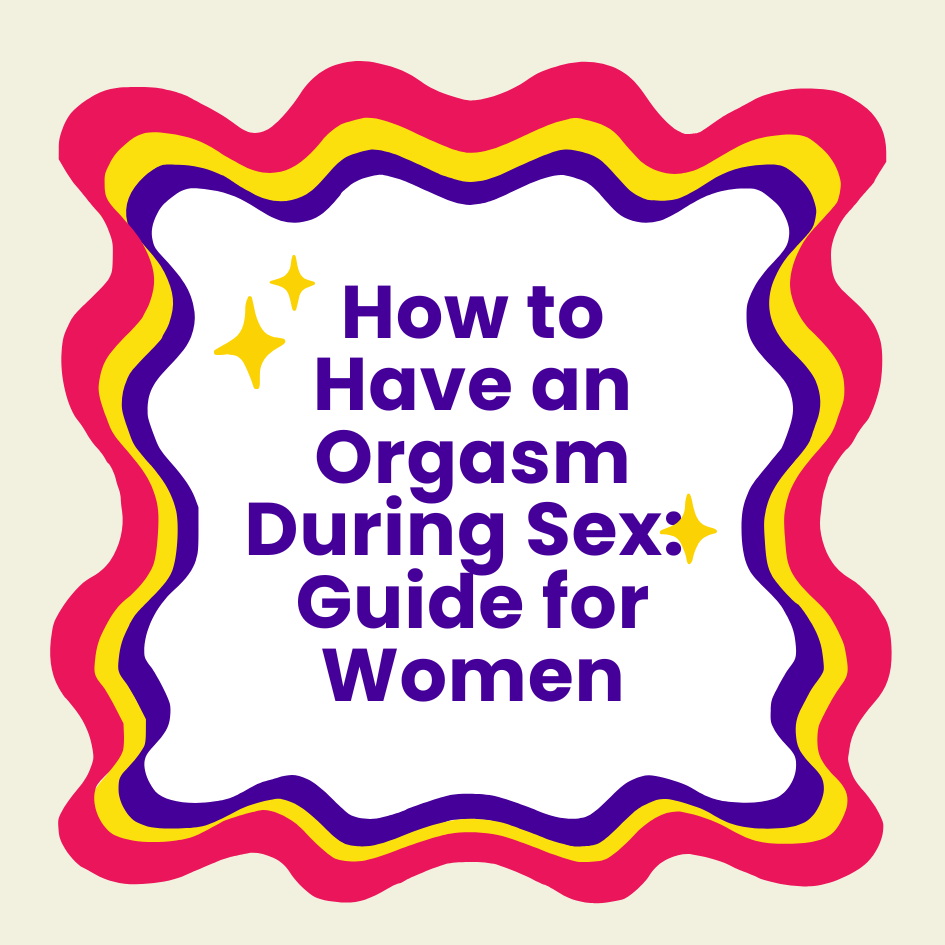
AKA what the heck is Femtech?
By Liz Klinger, Co-founder of Lioness
Femtech is a weird category. While it has raised awareness in the mainstream consciousness about a number of issues related to women’s health, the term is not without its underlying problems.
Here, I will speak about it as the Co-founder ofLioness, a sexual wellness company that created a biofeedback vibrator that helps people learn more about their own bodies and pleasure. I started Lioness in 2013, a few years before the term Femtech was in the general conversation, and can share a bit about how the rise of this term has influenced investment and media over the years.
What is Femtech?
The term Femtech was originally coined by Ida Tin, CEO and Co-founder ofClue, a period tracking company. When she first wroteher article about this fledgling industry in 2016, she defined femtech as a “new and huge category addressing female health needs through technology.” She defined it very broadly to be a catch all for the large array of health topics that could fall under women’s health.
Why was the term Femtech created?
The term “Femtech” came about from a few sources:
1. Consumer Package Goods (CPG) Industry
Tin cited that the term Femtech was partially inspired by the term “Femcare,” which has existed as a category in the CPG companies for decades — think multi-billion dollar companies like P&G and Church & Dwight. Femcare divisions at these large companies usually consisted of menstrual products like pads and tampons. Although Femcare touched on some of the topics Tin was focusing on at Clue, she did not think Femcare was broad enough to include technologies that could radically alter women’s health.
2. Venture Capital, Angel Investing, and Startups
Another source of the term is from the VC and Startup industries. When Tin originally came up with the term Femtech, its purpose was to find a way to categorize a group of technologies and solutions that were geared towards the health of women and present it as a fledgling category worthy of investment and resources from investors.
Why VCs and Startups needed a special term
Startups and VCs have a tendency to bucket categories into “something-tech” — think fintech (finance technology), agtech (agriculture technology), adtech (advertising technology) and more.
Yeah, these terms don’t sound very creative, but it is straightforward and doesn’t take much background or deep thinking for most people to quickly understand the rough topics being discussed.
One of the reasons VCs and startups do this is because some investors focus on a handful of industries that they or their colleagues are familiar with (or think are cool — like AI and blockchain). Creating a term like femtech makes a group of companies more likely to be followed by a group of interested investors.
Second, investors follow trends. If certain areas related to women’s health see a spike in growth, the theory is that investors would start taking notice of the category in general — some may even start even saying that they’ll invest in Femtech as a rising category. The whole industry will attract more funding, and a wide variety of topics in this catch-all topic may get more awareness, resources, and funding that it otherwise wouldn’t see.
Tin, myself, and many other entrepreneurs who are working within the reproductive and sexual health spaces in some way have faced plenty of challenges fundraising over the years, before and after this term was created. The term hasn’t been the complete solution, but it has helped in certain ways (I’ll get into that more shortly).
A learning curve with opportunities
For most people starting companies, fundraising is never easy. But when you are creating a company in a space that investors (who are mostly cis-men) have never really thought about, part of the challenge is basic education about not only the market, but also some of the basics about the topics themselves. Think sex ed 201 combined with industry education ... and then also make the case on how your company and approach is different and will be successful.
Oh, and also, potentially untangling various misinformation / misunderstandings / hangups around all things menstrual blood, fluids, vaginas, gender constructs, orgasms, relationships, hair in various places, hormones, and more. These things may prevent conversations from ever happening, or from conversations progressing from an interesting topic to a potential company in an investor’s portfolio.
Challenges still exist for Femtech as an investment category
Investor’s wives, friends often become de facto arbitrators of what to invest in Femtech
For “women’s stuff” in general, many investors defer to their wives, daughters, or women-identifying friends or colleagues. But it’s not very vigorous market research, and not all “women-oriented” products will appeal to all women … but you might be surprised how many times one or a handful of women in an investor’s social circle become the determining factor for whether or not to fund a startup. Despite other evaluations and vetting over a period of weeks or months, something as simple as the wife saying yes or no can make or break the deal.
Women investing in Femtech isn’t necessarily the solution either
I hear calls for women to invest in Femtech and other women-oriented businesses, and also for women-identifying investors to invest in women.
The thing is, that's narrowing the pool to be very, very small. As recently as the end of 2019, an Axios analysis determined that just 105 of 1088 of U.S. VC investors who are actual "decision makers" (at the top level of a firm's management) are women. There have been various efforts to add more junior-level women and obfuscating job titles / positioning them higher up on team pages to make firms seem more diverse, which is more optics than substantial change.
Like in other industries where women are looking to prove themselves, many female investors don't appreciate being handed the "women's stuff" for deal flow and don't want to be pegged as such, especially if it's not an expressed interest. It's understandable because no one wants to be cornered into a niche and have their opportunities for growth be limited in an industry that still very much male dominated (along with race and class as well).
For the few women who are investors in Femtech, it's not uncommon to hear Femtech being discussed more like supporting a non-profit or impact organization rather than a competitive, viable, money-making industry. While I’m in the business of sexual wellness to help create change and impact, implicitly treating for-profit Femtech companies like non-profits can actually do a disservice to women’s health. It assumes that Femtech companies don't make enough money to be competitive versus companies in other industries and are more likely to be passed up for funding and other resource opportunities.
If the companies were non-profits, that would be one thing. But otherwise, the mindset changes the way investors make investment decisions. It's easier to deprioritize the category compared to other industries that seem more profitable.
Furthermore, the focus often turns to topics that feel more palatable (helping mothers/children and youth sex education are two popular ones) and topics the investors themselves comfortable bringing up with their colleagues and friends. This narrower focus limits the groups of people who are served, and it often becomes the same topics and people who are helped over and over, while others who really need help continue to be underserved and ignored.
There’s also the fallacy that many of us fall into, including investors regardless of gender or background, which is over relying on our own experiences and view of the world to make decisions. Like their male counterparts, female investors will also gravitate towards things they’d personally use or find cool (cue blockchain and AI again). What investors, a small group of wealthy individuals, find interesting, often doesn’t translate to what the rest of the world wants and needs (cue Juicero).
Benefits of having a term like “Femtech” exist
Investors have an easier way of talking about the category
As I mentioned a bit previously, before Femtech was announced as a term, most investors had no way to make sense of and track different companies that related to women’s health in some way. When I startedLioness in 2013, several years before Tin’s article on the term, many investors would tell me that they just didn’t know how to place my company Lioness in the broader marketplace. They didn’t know how to move forward with evaluating it.
Investors had no numbers or comparables to use as approximations (even if imperfect), and didn’t know where to start wrapping their heads around it. Now, although the term Femtech is still quite broad and vague, they have something to bucket things into. At the very least, companies that fall under the term Femtech may be discussed as a topic of interest in partner meetings now and then versus that “weird vagina thing I heard about that I might bring up with the other guys at the partner meeting.”
Fertility and motherhood stand out as areas of interest
Certain areas within Femtech such as fertility, pregnancy, and early motherhood have particularly done well — Willow (breast pump) has raised $62.5M from NEA and others, albeit they’ve had a bit of help since Willow was started by NEA General Partner Josh Makower, who has invented dozens of products over his career and has been involved with NEA off and on since he started there as an EIR (Entrepreneur In Residence) in 1995. Other examples include Elvie (breast pump and kegel device — $53.8M), Ava (fertility $42.4M), Kindbody (fertility — $31.3M), Modern Fertility ($22M).
Compare to companies that are not purely focusing on motherhood and fertility — like NextGen Jane (endometriosis and women’s health — $11.3M), Genneve (menopause — $4.5M), and Lioness (sexual wellness — $1.5M).
Problems and criticisms
1. Many other topics are still overlooked, despite the broad definition, strong need, and willingness to pay
And I mean many — menopause, endometriosis, sexual wellness, trans issues, and more. This all might sound a bit silly that such big categories are still overlooked, especially since Femtech technically could be considered a pretty broad category.
For people reading here who may be very familiar with the nuances of women’s health and the health of people with vaginas, it can be extremely frustrating to see such big, obvious topics be ignored. But remember that most of the population has had poor education on reproductive and sexual health — including people who come from wealthy backgrounds and/or graduated from some of the most competitive universities in the world. And that includes many investors, too.
For instance, many people who consider themselves fairly intelligent and/or well-educated are shocked to learn about things like the full structure of the clitoris for the first time in their 40s or 50s (or older), or that an orgasm includes a rhythmic pattern of pelvic floor contractions, and that everyone regardless of sex and gender very often experience an orgasm this way.
With the exception of OB/GYNs and Sexual Medicine Doctors, the average medical school student, over the course of 4 years, receives just3-10 hours of sexual health education — and most of that education consists of STI prevention and pregnancy. Also, we’re seeing a massive OB/GYN shortage in the United States —over half of all U.S. counties lack a single OB/GYN provider. Many OB/GYNs who are practicing areincreasingly serving as a patient’s main doctor and do not have time to help patients with other sexual wellness needs.
Our state of understanding all this is pitiful for pretty much everybody. But there are also a lot of opportunities for massive improvement. Many of us would be keen to learn more about sex and how to improve aspects of our intimate lives.
2. Tunnel-vision focus on fertility and motherhood
While Femtech was intended to be a broad category of all sorts of women’s health-related experiences, in certain settings, it’s treated as anything but that.
Most investors and large companies have focused primarily on fertility. Why? Because that’s the area that has reliably made the most money. Fertility and motherhood have historically been big businesses on their own before the term Femtech came about. And also, to be frank, a vast majority of investors are men who have some first- or second-hand experience with pregnancy and parenthood and thus are more familiar with these topics, may personally care about these topics, and may be more comfortable to invest.
That leaves the rest of the experiences a woman may have on the wayside including (but not limited to) menstruation, sexual wellness, menopause, trans issues, PCOS, endometriosis, painful sex, and more. While the term femtech has helped bring some of these topics more into the light, they’re still far more ignored compared to issues related to fertility and motherhood and don’t get the same level of attention or funding.
Fertility solutions for men also get ignored
Interestingly, the tunnel vision focus on pregnancy and motherhood for women results in largely ignoring the struggles men and people with penises have with fertility, even thoughone-third of infertility cases are caused by fertility problems in men (the other third is women, and the final third is both or unknown).
It’s an interesting phenomenon because Viagra and erectile dysfunction solutions have received a lot of investor attention, and Viagra and Cialis have been on mainstream TV for decades now while anything related to pleasure for women is outright censored before it sees the light of day. Bucketing fertility into “femtech” hurts solutions geared towards men, and ultimately, limits fertility options for everyone.
3. Ignoring “icky” topics
Different groups will treat the topic of Femtech very differently. Depending on who I talk to withLioness, for example, will determine whether Lioness is squarely in Femtech or not at all — and in fact, is considered “icky,” not related to health at all, and should be out of the conversation entirely.
Case in point: Lioness was invited to, then asked to remove our product at the last minute, from awomen’s health focused event hosted by Samsung and the Women in Tech SF groups. After waiting for hours to talk to the nameless/faceless person who made the decision, the senior director told me that Lioness had “nothing to do with women’s health and shouldn’t have been there,” even though our product uses biofeedback, sensors, data, and AI, and we’re working with researchers to introduce physiological sexual function into a variety of health research from sexual and reproductive health to mental health, to cardiovascular health, and more.
CB Insights has deliberately excluded sexual wellness companies that can serve women from theirWomen’s Healthcare and Sexual Wellness market maps — the same market maps that investors and industry insiders have shared for years and use as a sort of introduction for investors who are new and want to learn more about the space.

Sexual wellness is more than condoms ...
As Rae Witte fromTechCrunch said, “For a site that touts itself as ‘loved by the smartest companies’ for sharing ‘insights on probability, not punditry,’ it is interesting that the $30 billion sex tech industry didn’t make it on this map. The only place we did find women’s pleasure brands was on a market map for ‘Valentine’s Day’ tech in 2020.”
Similarly, Healthcare Growth Partnershas also excluded sexual wellness from their market maps as well.
Investors that are actively seeking an introduction on this space are not getting accurate data and insights from the so-called arbitrators of this data, which prevents the market from growing, evolving, and getting the awareness that entrepreneurs like myself want, and investors who are interested in learning more about the space (and finding money making opportunities) also want.
4. Ignoring the experiences of trans-folx, non-binary, and other marginalized people
The term Femtech isn’t inclusive of the experiences of trans and non-binary folks. Similar to how data companies ignore sexual wellness in their market maps and a lot of the investment and resources have gone to fertility and motherhood-oriented companies, these same groups also ignore the needs of LGBTQ people, even thoughGen Z (and also Millennials) increasingly see their own sex and gender identity as independent of each other and/or know someone who uses gender-neutral pronouns.
People who do not identify as cis, heterosexual women often face a unique set of challenges, including when seeking healthcare and working with doctors, including OB/GYNs. Not taking these pains and needs into consideration when putting together a market map currently defined as “Femtech” does a disservice to our youth and people who continuously face a lot of barriers daily just to live happy, healthy lives.
5. Femtech was a term created for investors, not as a term to broadly capture the human experience
To be frank, Femtech is a term to market a batch of companies in a way that is palatable to investors, who are often upper-middle class men. To try and mold Femtech into something that defines our vast and diverse experiences is an impossible task.
As an investment category it has benefitted many companies to some degree. While a lot of the focus has still been on fertility and motherhood, by grouping more categories together under the umbrella Femtech, other companies have started getting more attention as well.
As said, the fertility and motherhood industries already were huge before — which begs the question of how much the term Femtech has actually helped those categories as well as bring in other categories into the forefront — but because they’re now also bucketed into “femtech” and we’re having more conversations about these topics, I believe it’s also started to raise the visibility of other issues beyond fertility and motherhood.
Is Femtech necessary?
As you can see here, I have mixed feelings about the term Femtech.
In the mainstream, I’ve seen how it’s ignored large swaths of the human experience because large industry and technology gatekeepers like CB Insights or Samsung want to keep the definition totheir definition that may not reflect our actual experiences, whether due to where they think the money’s going or if the executives are personally not comfortable with certain aspects of vaginas, pleasure, etc.
As we see the term Femtech discussed in the mainstream and beyond, let us not forget why this term came about in the first place and raise the issues that need awareness and go unheard by these gatekeepers.
We can use Femtech to spark people’s interest (or rage) so they want to learn more and get involved in shaping and evolving the future. And we can work towards finding better ways of describing our real needs and experiences.
Femtech started the conversation. Let’s use it to continue to bring more attention to our real needs and experiences.
===
Ready to explore yourself? Literally *see* your arousal and orgasm with the Lioness Vibrator!

The Lioness Smart Vibrator

Top Stories
Is there a difference between male and female orgasms?
How to use Lioness Smart Vibrator as a couples sex toy
Live view: See your orgasm in real time with Lioness
Related Stories
I Had the Best Orgasm with Weed Lube and I Have Data to Prove It.
Let's get nerdy with data (How to download your Lioness data)




